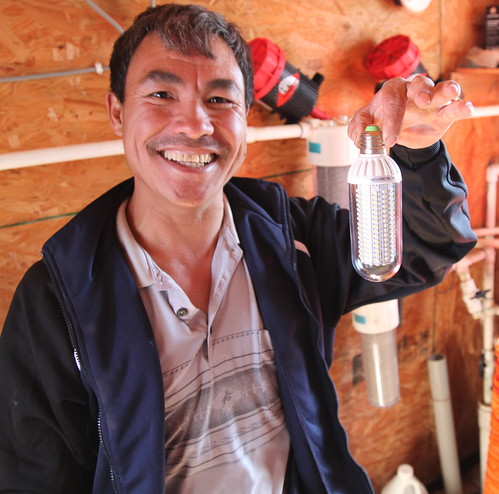
It can take a lot of energy to raise chickens as farmers have to control the temperature and lighting in houses, meaning high costs and high energy use.
But with help from USDA’s Natural Resources Conservation Service, poultry producers can cut their costs while conserving energy.
One Benton County, Ark. producer is cutting his gas and electric bills while decreasing greenhouse gas emissions. Stanley Lee did this by installing radiant heaters, light-emitting diode light bulbs, or LEDs, and attic insulation in his six chicken houses that shelter 890,000 chickens each year.
Lee’s work will reduce an estimated 95 tons of carbon dioxide equivalent per year by decreasing the amount of fossil fuels used for power. That is equal to the annual greenhouse gas emissions from 18 passenger vehicles. This not only helps the producer save money but benefits the environment.
“I’m already seeing a return on my investment on the amount of propane required to keep the houses at the proper temperature,” Lee said. “So far for this flock, I’ve used about half the propane that is normally required by this time – the insulation and radiant heaters keep the houses warmer longer.”
Lee also expects to see savings with the new light bulbs. He is replacing 75-watt incandescent bulbs with 10-watt LED bulbs.
“Although the bulbs cost more, they last longer and use less electricity, which will cut my electric bill,” he said. “The LED bulbs are brighter and allow me to dim them more.”
NRCS worked with Lee on an Agricultural Energy Management Plan, which prescribed the conservation practices needed to lower his carbon footprint.
“The energy savings is going to be great,” Lee said. “Without the financial assistance provided by NRCS, I wouldn’t have been able to make these improvements.”
Conservation efforts, like those on Lee’s farm, are some of many USDA efforts to help America’s farmers, ranchers and forest landowners adapt to new challenges caused by a changing climate.
